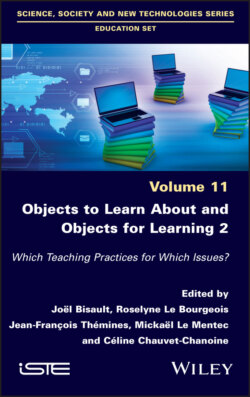Читать книгу Objects to Learn about and Objects for Learning 2 - Группа авторов - Страница 24
1.4.2. What points of reference were chosen initially?
ОглавлениеGiven that geography does not have a monopoly on space and that the audience for this training was very heterogeneous in its spatial knowledge (Merenne-Schoumaker 2012), it is not surprising that there was a wide range of responses among the first suggestions for spatial points of reference. The pupils did not arrive “without anything”, especially in CM2, and they deployed knowledge constructed by interactions between the academic and personal environments. This reinforces the idea that geographical knowledge functions as a system, which makes school geography one of the poles that benefits from the contributions of university geography, applied geography and, in the context of our current focus here, mainstream geography (Chevalier 1997). The didactics system takes these elements into account by adapting the typical representation, which is usually modeled in the form of a triangle between the pupil, the teacher and knowledge (traditionally “academic”), into a diamond shape for which the additional point is made up of media and vernacular knowledge (Labinal 2012).
The instructions were thus as follows: “Find ten locations you consider important to know about and to be able to locate” (responses presented in Tables 1.2–1.5). A priori clear enough to be understood and open enough to not bias the responses, this formulation still confused some pupils, since some of the responses (Table 1.2) were organized around places that could be considered “general”, important to everyone (town hall, hospital, police station, etc.) or for themselves (home, school, garden, etc.) but that could not be located on a map larger than a town, neighborhood or even a specific home: a first set which represented the characteristic “uninformative for others” (Leroux and Verherve 2014) and that could not be used for the remainder of the project.
Table 1.2. Indefinite places
| Indefinite places | Frequency |
| Town hall | 5 |
| Home – school | 4 |
| Police | 3 |
| Hospital | 2 |
| Fire station – dentist – museum – veterinarian – supermarket – train station – street – church – mausoleum – beach – mosque – garden – classroom – mountain | 1 |
A second set of responses could be divided into two groups (Tables 1.3 and 1.4) included spatial references that were now identifiable, but still too vague and large to fit the framework proposed in this project. The largest spatial containers, namely the continents, were mentioned and recognized, with the exception of Oceania, typically confounded with Australia, which was mentioned in the country category. The countries were primarily European. We noted countries with large areas (Russia, China, Brazil), most of the countries bordering France, and those with family relationships (the Maghreb). The cities were primarily French, with Paris at the top of the list; Tourcoing was naturally mentioned in the same breath as Lille.
Table 1.3. Cities
| Countries | Cities | Frequency |
| Paris | 7 | |
| Lille – Tourcoing – Marseille | 3 | |
| Lyon – Strasbourg – Montpellier | 2 | |
| Nice – Nantes – Toulouse – Nîmes – Toulouse – Bordeaux | 1 | |
| Others | London – Rome | 1 |
Table 1.4. Spatial containers
| Spatial containers | ||
| Continents | Frequency | |
| Asia | 3 | |
| Europe – Africa | 2 | |
| America – Antarctica | 1 | |
| Continents | Countries | Frequency |
| Europe | Italy – Russia | 5 |
| France | 4 | |
| Belgium – Spain – Portugal | 3 | |
| United Kingdom | 2 | |
| Germany – Romania – Switzerland | 1 | |
| Oceania | Australia | 1 |
| Africa | Algeria | 2 |
| Tunisia – Egypt | 1 | |
| Asia | Russia | 5 |
| China | 2 | |
| America | Brazil | 2 |
| Argentina – Mexico | 1 |
Table 1.5. Locatable points of reference
A third group of responses (Table 1.5) appeared promising for the rest of the project, as it included locatable points of reference with sufficient precision to lead to a system of clues, one of which would be based on the location as a member of a higher level (city, country, continent). Europe was also overrepresented in this list in relation to other continents, as was France in relation to other countries and Paris in relation to other cities. A few places typically visited during summer vacations were included by four pupils (Burj Khalifa tower, the pyramids of Egypt, the old port of Marseilles and Disneyland). Major urban landmarks were included (Statue of Liberty, Tower of Pisa, Corcovado, Sagrada Familia), as were natural sites (the Nile, Niagara Falls, Sahara). What was also notable was the dominance of British (Britain having already been studied at the beginning of CM2) and especially Parisian reference points (the “cultural capital” effect). Since the work was done at home, several pupils admitted to having used the Internet, but they said they did not ask their parents. The points of reference from this list that were used in the final game are listed in yellow; we will come back to discuss this.
